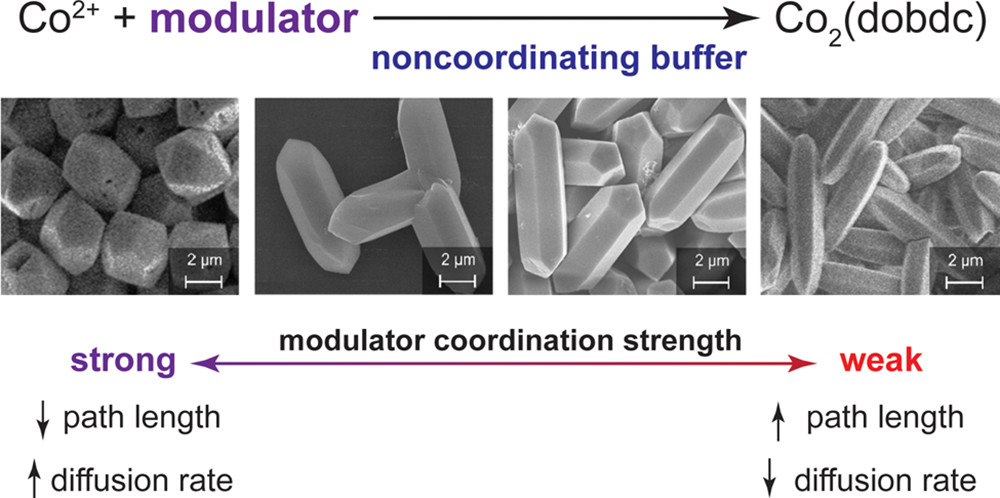K. A. Colwell, M. N. Jackson, R. M. Torres-Gavosto, S. Jawahery, B. Vlaisavljevich, J. M. Falkowski, B. Smit, S. C. Weston, and J. R. Long, Buffered Coordination Modulation as a Means of Controlling Crystal Morphology and Molecular Diffusion in an Anisotropic Metal–Organic Framework J Am Chem Soc (2021) doi: 10.1021/jacs.1c00136

Abstract: Significant advances have been made in the synthesis of chemically selective environments within metal–organic frameworks, yet materials development and industrial implementation have been hindered by the inability to predictively control crystallite size and shape. One common strategy to control crystal growth is the inclusion of coordination modulators, which are molecular species designed to compete with the linker for metal coordination during synthesis. However, these modulators can simultaneously alter the pH of the reaction solution, an effect that can also significantly influence crystal morphology. Herein, noncoordinating buffers are used to independently control reaction pH during metal–organic framework synthesis, enabling direct interrogation of the role of the coordinating species on crystal growth. We demonstrate the efficacy of this strategy in the synthesis of low-dispersity single-crystals of the framework Co2(dobdc) (dobdc4–= 2,5-dioxido-1,4-benzenedicarboxylate) in a pH 7-buffered solution using cobalt(II) acetate as the metal source. Density functional theory calculations reveal that acetate competitively binds to Co during crystallization, and by using a series of cobalt(II) salts with carboxylate anions of varying coordination strength, it is possible to control crystal growth along the c-direction. Finally, we use zero length column chromatography to show that crystal morphology has a direct impact on guest diffusional path length for the industrially important hydrocarbon m-xylene. Together, these results provide molecular-level insight into the use of modulators in governing crystallite morphology and a powerful strategy for the control of molecular diffusion rates within metal–organic frameworks.